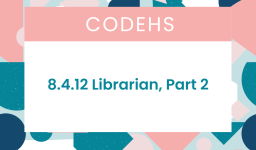Food contamination caused by pathogens on a food handler’s body can be controlled by
- good personal hygiene
- time-temperature control
- reducing cross-contamination
- proper cleaning and sanitizing
Answer
Food contamination caused by pathogens on a food handler’s body can be controlled by good personal hygiene.
Food contamination caused by pathogens can be controlled by practicing food safety and by using sterile techniques when handling food.
Pathogens are microorganisms that can cause disease in humans, animals, or plants. Some examples of pathogens include bacteria, viruses, and parasites. Food can become contaminated with pathogens at any stage of the food production process. For example, contamination can occur during harvesting, processing, or cooking.
Foodborne illnesses are caused by consuming contaminated food. Symptoms of foodborne illness vary depending on the pathogen involved but can include vomiting, diarrhea, and fever. In severe cases, foodborne illness can lead to death.
You can protect yourself from foodborne illness by practicing good food safety habits. This includes washing your hands often, especially after handling raw meat;
a. seal in the flavor
b. decrease discoloration
c. prevent cross-contamination
d. keep temperature consistent
a. brushed and wiped
b. wiped and rinsed
c. rinsed and cleansed
d. cleaned and sanitized
a. 6
b. 10
c. 15
d. 20
a. towels for drying are nearby and clean
b. detergent and sanitizer dispensers are filled
c. spray nozzles are soaking in a bucket of delimer
d. water temperature is at least 100 degrees F
a. tape
b. gauze
c. finger cot
d. splint
a. no, they should be kept on the workstation where spills typically occur
b. no, they should be kept in the food handler’s apron or back pocket for easy access
c. yes, as long as the solution is kept on the shelf above the workstation
d. yes, towels for cleaning food spills should always be kept in sanitizing solution when not in use
a. cases of lemons stored on the floor
b. boxes of pasta on a shelf 2 inches off the floor
c. cans of kidney beans on a shelf 4 inches off the floor
d. cartons of apples on a shelf 6 inches off the floor
a. walls
b. stockpots
c. utensils
d. glasses
a. none
b. not getting work done
c. becoming dehydrated
d. spreading pathogens to food
a. no, because today is the use-by date
b. no, because the salad should have already been thrown out
c. yes, because today is the last day it can be served
d. yes, but only to employees
a. practicing good personal hygiene
b. cleaning and sanitizing surfaces the right way
c. eliminating physical hazards
d. controlling time and temperature
a. put all the food in the freezer
b. turn the thermostat down
c. move the food to another cooler
d. tell the manager
a. elbows
b. upper arms
c. fingernails
d. shoulders
a. dried pasta
b. baked potato
c. sliced bread
d. uncooked rice
a. practicing good personal hygiene
b. controlling time and temperature
c. preventing cross-contamination
d. cleaning and sanitizing the right way
a. tortilla chips
b. canned chili peppers
c. jar of salsa
d. sour cream
a. bacteria
b. fungi
c. parasite
d. bone
a. wash hands correctly
b. dip hands in sanitizing solution
c. rinse hands in warm water
d. wipe hands on an apron
a. gloves are applied
b. artificial fingernails are worn
c. the nails are cut short
d. the polish is a light color
a. eat the operations good
b. offend customers
c. carry pathogens
d. destroy the building
a. good personal hygiene
b. time-temperature control
c. reduce cross-contamination
d. proper cleaning and sanitizing
a. transfer of pathogens from one surface to another
b. poultry from being held at room temperature
c. raw poultry from contaminating their hands
d. contamination of the food with cleaning chemicals
a. fish held at 126 degrees F (52 degrees C)
b. beans held at 141 degrees F (61 degrees C)
c. soup held at 154 degrees (68 degrees C)
d. steak held at 160 degrees F (71 degrees C)
a. 1-gallon plastic container of sour cream
b. 1-gallon plastic thermos
c. 5-gallon bucket of barbecue sauce
d. 5-gallon bucket of powdered sanitizer
a. no, because food handlers’ hands will get dirty
b. no, because pathogens from food handlers’ hands could contaminate the muffins
c. yes, because it’s easier to serve the muffin so it won’t crumble
d. yes, because finding tongs or gloves can be difficult
a. 110F (43C)
b. 127F (53C)
c. 130F (54C)
d. 137F (58C)
a. nail brush
b. soap
c. toilet paper
d. hand lotion
a. put a bandage on
b. make sure the wound is clean
c. bandage the wound and put on a glove
d. put antiseptic cream on the wound
a. the dressings may have spilled on the ice and may cause and allergic reaction
b. the dressings will not be held at the correct temperature if a few ice cubes are removed
c. the ice could be contaminated and make the customer sick
d. the ice will dilute the soup and change its flavor
a. before cleaning dirty dishes
b. before handling chemicals
c. after their shift ends
d. after handling money
a. biological
b. chemical
c. physical
d. environmental
a. Tongs
b. glasses
c. utensils
d. mop bucket
a. dishwasher rack
b. butcher knife
c. stove door
d. outside of a salt shaker
a. practicing good personal hygiene
b. controlling time and temperature
c. preventing cross-contamination
d. cleaning and sanitizing surfaces the right way
a. micro-transmission
b. pathogenic spread
c. cross contamination
d. surface saftey
a. on the bottom surface
b. on the top surface
c. in the thinnest part
d. in the thickest part
a. away from food prep areas
b. next to the dishwasher
c. in the dry-storage area
d. near the food prep area
a. apply soap, scrub hands and arms, rinse hands and arms, and dry
b. apply soap, wet hands and arms, rinse hands and arms, and dry
c. wet hands and arms, apply soap, rinse hands and arms, apply hand antiseptic, and dry
d. wet hands and arms, apply soap, scrub hands and arms, rinse hands and arms, and dry
a. wash and rinse the celery
b. change into a clean apron
c. clean and sanitize the knife and cutting board
d. nothing ; celery is not a TCS food
a. use-by date
b. ingredients used
c. name of the cook
d. purchase date



